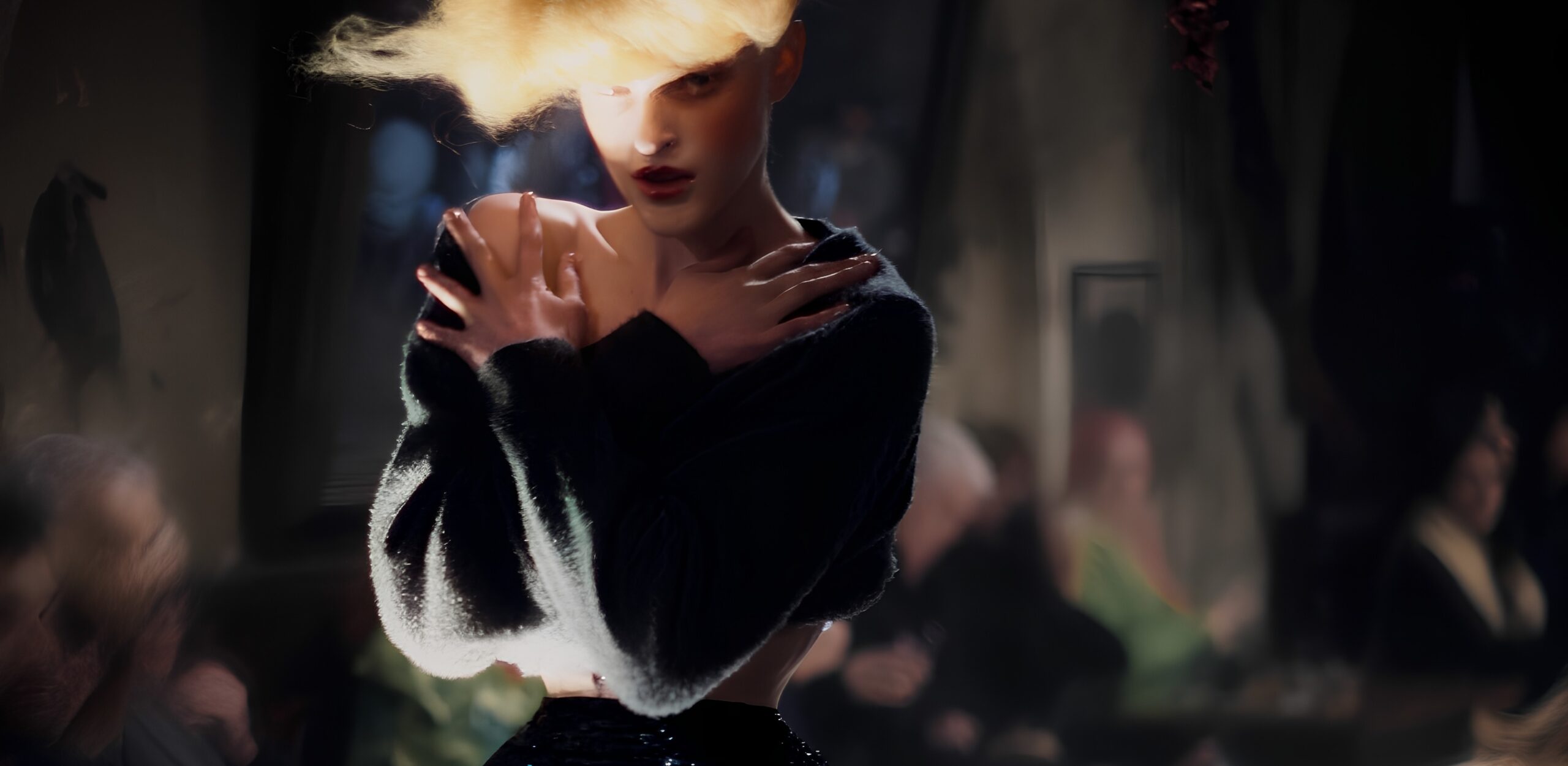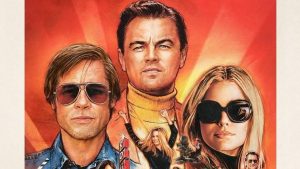“She’s brought a ludicrously capacious bag,” Tom Wambsgans (Matthew Macfadyen) sniffed at the $2,890 Burberry tote on the shoulder of Greg Hirsch’s (Nicholas Braun) date.
The worlds of high fashion, film, and TV have long influenced each other in a feedback cycle that creates, reflects, and responds to social trends and cultural attitudes. 2023 was the undeniable era of “quiet luxury,” an aesthetic that champions simplicity and subtlety over flashy designer branding. The trend’s prominence can partly be attributed to the HBO drama Succession and its recent Emmys sweep: quiet luxury epitomizes the show’s styling choices. In the show’s season 4 premiere, “The Munsters,” Kendall Roy (Jeremy Strong) dons a $240 blank t-shirt, $6,490 bomber jacket, and $625 black baseball cap. He sports outfits of a similarly lofty price range and painfully drab aesthetic throughout the seasons; the clothing pieces might look like $10 basics to the untrained eye, but to the eyes that matter, Kendall’s wardrobe is a clear display of class and taste. The Roys’ subscription to quiet luxury was often implicit, just by merit of what they wore, but it was also explicit, as pointedly voiced in Tom’s bag critique—in all instances, the family used fashion as a means of separation from those they perceived to be of lower social class.
Quiet luxury traded established fashion houses that live and breathe logos—Gucci, Louis Vuitton—for understated brands like The Row and Peter Do, known for their unassuming pieces with exorbitant costs. Look no further than last year’s fashion week runways to see how brands honored this commitment to minimalism: collections clung to neutral palettes of black, white, and earthen tones; clean, tailored silhouettes; and timeless leather textures. In 2023, it became ideal for brands not to have any defining trademark, but to achieve “if you know, you know” status.
Though “stealth wealth” may have entered mainstream consciousness with celebrity culture, the trend’s foundation lies in economic and social roots. The pivot to minimalism was simultaneous with the recession that resulted from COVID, as brands and luxury buyers alike shied away from excessive displays of wealth in favor of sensibility. Thomas Serrano of Forbes hypothesizes that “flaunting expensive logos may be considered insensitive. It also may be more harmful to the brand image because it represents excess wealth to some consumers who may be struggling.” Thus, conspicuous branding became an embarrassing indicator of poor taste, rather than the object of public envy.
The correlation between economic downturn and quiet luxury isn’t a new hypothesis: the trend’s first iteration came shortly following the 2008 recession, when Hérmes swapped out bright orange bags for plain brown ones. 2023’s quiet luxury cycle rested on the same precedent, yet was coupled with the judgemental decree that influencer culture has cheapened household designer logos, resulting in an aristocratic effort to redefine the criteria of high fashion to bring back its exclusivity.
But collective desires have shifted again in the post-pandemic return to normalcy, and fashion and media trends have followed suit. The end of remote work is seeing much of Gen Z enter the corporate workplace for the first time, a drastic shift in lifestyle from those just leaving school or accustomed to remote work. As a generation that’s long been breaking away from traditional identity norms, it’s no surprise we’ve deemed some of the boundaries between personal and professional to be archaic and unnecessary. One result of that collective belief is the rise of the “office siren,” a trend that is equal parts a fashion statement and a reflection of new attitudes toward professionalism.
The office siren is a corporate wear aesthetic that blends together high fashion looks and vintage Y2K flair from the late ’90s and early 2000s. Characterized by a bold red lip, sky-high stilettos, and statement jewelry, the office siren is equal parts mysterious and sexy as she is powerful and ambitious. She pays homage to the likes of Andrea “Andy” Sachs (Anne Hathaway) from the 2006 cult classic film The Devil Wears Prada (TDWP) and Samantha Jones (Kim Cattrall) from Sex and the City. Crucially, the participants in the trend aren’t always looking to put together outfits that are 100% dress-code appropriate and practical; rather, they are focused on conjuring empowerment and confidence. Asia Bieuville, one of the first TikTok creators to coin the aesthetic, claims that “the trend is all about challenging feminine energy in the office, a space that’s so often male-dominated.”
The office siren wasted no time making her couture debut: Mark Gong SS24—a collection fittingly titled “I love you but I love me more”—playfully reworks traditional corporate wear to showcase “bold attitude, just like every working girl in ‘Sex and the City,’ embodying Samantha’s confidence, self-awareness, and self-love.” Gong elevated the typical runway, paying extra care to accessories and emphasizing the importance of an unapologetic strut to curate a sleek and sultry concept show. Model Xiru Yang’s look shot to virality thanks to the two coffees she balanced in one hand and the hanger that swung from the other. With cat-eye glasses framing eyes that could kill, Yang was the spitting image of the sassy fashion intern. Gong tipped his hat to TDWP with the look’s caption: “Miranda, here’s ur no-foam skimmed latte with an extra shot, and the jacket u asked me to pick up from Patrick Demarchelier.” The devil might wear Prada, but it is also in the details.
The office siren’s pursuit of redefining corporate codes is rooted in a notion of cherishing and championing femininity, an objective of female empowerment that has been on the general uptick. In this broad triumph, the coquette trend is simultaneously making waves across the internet, reclaiming the aesthetic to celebrate female friendship and girlhood with dainty bows of ribbon and flounces of satin.
Coquette dominated the big screen with the release of Sofia Coppola’s Priscilla (2023), as the pastel color palette, pearls, and lace that adorned Priscilla Presley (Cailee Spaeny) perpetually trapped her in the appearance of adolescent girlhood. Pop culture championed the film a Sofia Coppola renaissance, declaring a new love for her work and its themes of feminity and innocence. High fashion has coincidentally done the same: Sandy Liang, whose brand has become somewhat synonymous with bows, showcased an SS24 collection aptly titled “The Virgin Suicides,” named after Coppola’s 1999 directorial debut film. The collection’s taffeta dresses, pleated skirts, and ballet flats look as though they could’ve been sketched on the film’s original storyboard, yet maintain a characteristic Sandy Liang flair, representing a contemporary interpretation of the themes that run through Coppola’s work. Fashion continuously evolves from past trend cycles, and given the collection’s overwhelmingly warm reception, this modern iteration of coquette is likely here to stay for a while longer.
Pop culture sits at the confluence of film, TV, and haute couture: the realms take influence from and inspire each other. More often than not, trends reflect the tastes, opinions, and anxieties we hold as a society. From the COVID-era worries that ushered stealth wealth forward to the Gen-Z brazenness that declared it out of style, fashion and entertainment serve as looking glasses into the mainstream consciousness. As for the rest of 2024, the online consensus seems to be that clean and quiet is out, and bold glamour is in.
Already, high fashion has seen a resurgence of drama, from Thom Browne’s 2023 haute couture collection to John Galliano and Pat McGrath’s triumphant work for Maison Margiela SS24. Phantasmic set design, inhumanly exaggerated silhouettes, and unwearable, flamboyant looks are back, and we can’t get enough. Unsurprisingly, the rediscovered love for dramatics coincides with a time when general social attitudes are leaning towards being unapologetically yourself. Anecdotally, Tiktok is embracing messy ‘90s makeup and the gaudy, audacious aesthetic of the fictional “mob wife,” an influence that’s surely going to make its way back into film and TV, sooner or later. Perhaps subconsciously, we’re welcoming extravagance and expression into creative spaces as a form of protest to the restrictive conditions of past years, compensating for what we lost.
From fashion to entertainment, I, for one, can’t wait to see what theatrics are in store for the rest of 2024.





